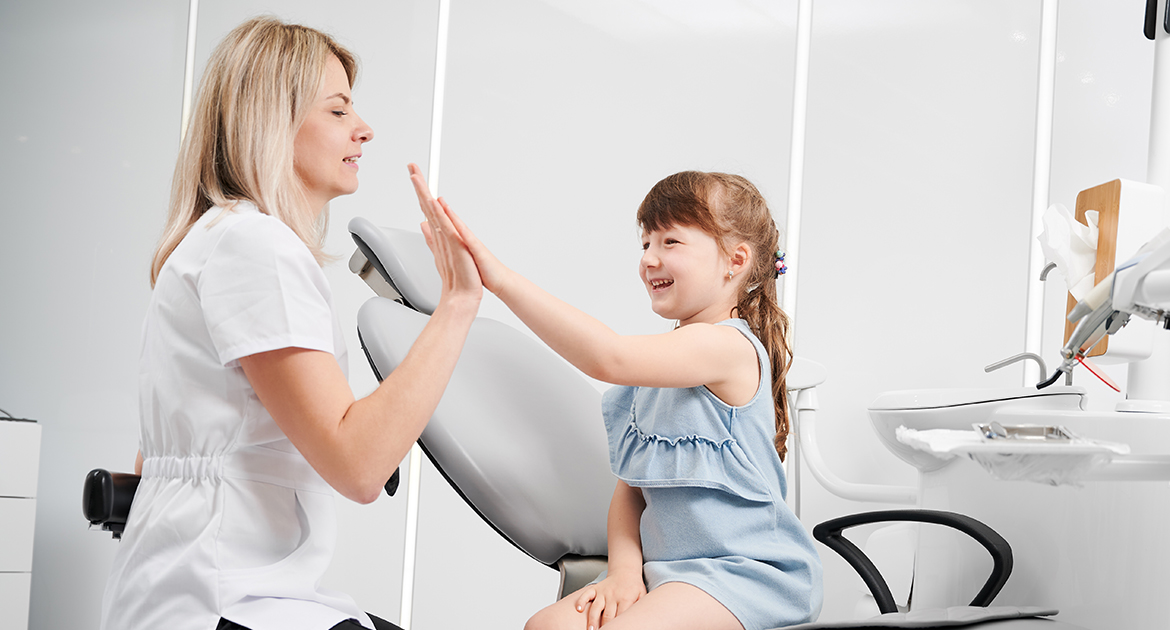
Gentle & Stress-Free Tooth Removal for Kids
At Caring Dental in Herndon, VA, Dr. Ashraf Adam prioritizes preserving children’s teeth, but in some cases, tooth extraction becomes necessary. Whether due to severe decay, trauma, or overcrowding, we ensure a gentle, pain-free experience for your child.
Our pediatric extractions are performed using child-friendly techniques and local anesthesia, making the process quick, comfortable, and stress-free.
When Is Pediatric Tooth Extraction Necessary?
1. Severe Decay or Damage
If a tooth is too decayed or damaged to be restored, extraction prevents infection and protects surrounding teeth.
2. Trauma or Injury
A badly broken or fractured tooth that cannot be repaired may need removal to prevent further complications.
3. Overcrowding
If a baby tooth does not fall out naturally, it may block permanent teeth from growing properly, requiring extraction to make space.
What to Expect During a Pediatric Tooth Extraction
1. Numbing & Comfort
✔ Local anesthesia or sedation ensures a pain-free experience
✔ The dentist gently loosens and removes the tooth
2. Post-Extraction Care
✔ Apply gentle pressure to stop bleeding
✔ Soft foods & rest for quick healing
✔ Avoid using straws & hard foods to prevent irritation
In most cases, Dentists use single tooth anesthesia technology, which is a child-friendly alternative that does away with the need for a dental injection. In this case, the numbing effects happen only at the tooth and not the lip or the face.
Suppose single tooth anesthesia is not the ideal option. In that case, dentists tend to use Nitrous oxide (laughing gas) either in-office sedation or general anesthesia.
Once your child is safely under anesthesia, the dentist gently rocks the tooth back and forth to ease it out of the socket for simple removal.
If the tooth is rigid and not easily rocked out, the dentist can remove it in sections.
Your baby will be under anesthesia during the procedure. However, there might be some discomfort after pediatric tooth extraction.
Your dentist will give you some tips on how to ease the pain.
And if necessary, the dentist will write you a prescription.
A little bit of bleeding is natural following an extraction.
Your dentist will apply sterile gauze to the affected area directly after removing the tooth.
In some cases, the situation might call for a few stitches to help the extraction area heal.
As a protection mechanism, The gums will rapidly form a protective blood clot. This blood clot needs to stay in place to avoid a dry socket (a painful condition when the clot removal exposes the underlying bone to air, food, and liquids ).
Avoid rinsing for the first 24 hours.
Then after that, you can use salt water for rinsing to make sure that the area stays clean and to help reduce pain. You can give your child some analgesics (Tylenol or ibuprofen) to help ease the pain.
You can also apply an ice pack outside the jaw for mild swelling.
Make sure that you call your dentist if your child gets a fever or notices excessive swelling.
If any signs of infection appear, the dentist will mostly prescribe antibiotics.

